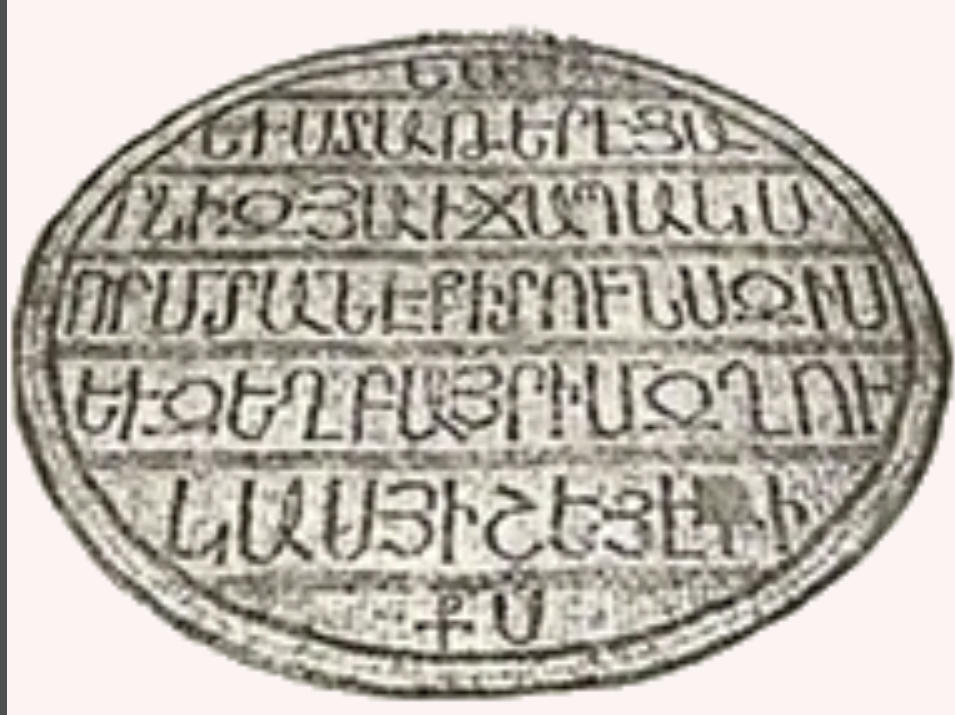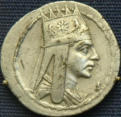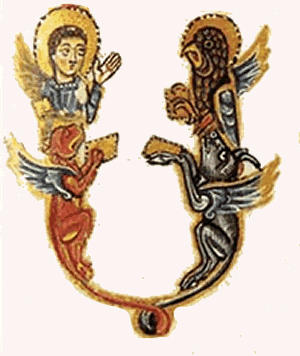

Armenian Jerusalem




One thousand and four hundred years ago, an obscure Armenian priest
knelt by the entrance to his cell, in a sprawling convent outside the
walls of the Jerusalem, and composed a humble plea.
The words he used were simple, but there was nothing unpretentious
in the medium he chose to convey his message: a magnificent floor mosaic
of five variously colored concentric circles, measuring eight feet by 10
and studded with pert red petals.
Within the protective embrace of the smallest circle, he inscribed
these memorable lines: "I, Yevsdat ( Eustacius) the priest, laid down
this mosaic. You who enter this room, remember me and my brother Ghugas
(Lucas), unto Christ."
Centuries passed, and Jerusalem fell under the sway of an
assortment of overlords who took a perverse delight in leveling the city,
again and again.
In the process, Yevsdat's prayer collapsed under the rubble of what
archaeologists concluded must have been the first Armenian monastery to
be built in the Holy Land.
As is almost always the case where archaeology is concerned, the
mosaic was discovered by a fortuitous accident - had it not been for the
pick of a laborer excavating for a new highway, the site might have been
consigned to oblivion, and the Armenian nation lost one of its most
precious relics, of which there are known to be only six others in the
world.
The "medallion" lay across the road from the beautiful Armenian
bird mosaic in the Musrara Quarter of Jerusalem unearthed a century ago.
It was only in November 1991 that laborers stumbled upon it, their picks
and shovels stirring up not only the dust of centuries, but also relics
of a people steeped in Christian history, lore and endurance.
Among the other finds on the site were three other Armenian
inscriptions, two tombstones, and one graffito on a large pottery bowl.
These join a number of other significant Armenian inscriptions
recently found in the Holy Land, the most interesting of which are
graffiti from Nazareth and the Sinai, which date from the first part of
the fifth century, within decades of the invention of the alphabet.
I was in my office in the Armenian Patriarchate when news of the
discovery reached us. An elated Patriarch, Archbishop Torkom Manoogian,
made prompt arrangements for a site inspection and accompanied by three
other members of the priestly Brotherhood of St James, we trooped to
Musrara.
We stood there, on the lip of the excavation, gazing down in
silence at the immaculately preserved work of art, each absorbed in his
own thoughts of wonder. None could bring himself to touch it - so full of
awe were we all.
This was another uncontroverted proof of the permanence of the
Armenians presence in Jerusalem: this was the prayer of one of our
priests, and these were the bones of some of our ancestors.
As if prompted by some inner call, the Patriarch raised his head
and began to intone a prayer for the repose of the souls of the dead.
And when his companion priests joined in singing "iy vereen
Yerusaghem" (upwards, towards the Upper Jerusalem, towards the dwelling
of the angels," I found it hard to stop the tears.
Archaeologists have been thrilled at the discovery of the
medallion, viewing it particularly important for the light it throws on
the series of mosaics bearing Armenian inscriptions discovered in
Jerusalem from 1873 to the early twentieth century.
The Yevsdat plea, written in impeccable Classical Armenian, has
been virtually completely preserved. The two names mentioned in the
mosaic are clearly Armenians form of their Greek counterparts.
According to the leading Israeli armenologist Professor Michael
Stone, even the full form "Eustathius" is very rare in Armenian usage.
"No form of this name occurs in the manuscript colophons down to
1200 (Mat‘evosyan 1988), or in the indexes of proper names in the
catalogues of the Mashdots Matenadaran, Institute of Ancient Manuscripts
in Erevan, Armenia and of the Patriarchal library in Jerusalem," he said.
"From the fact that both names are Greek and Christian, it is
perhaps possible to infer that both brothers were clerics, for it was the
customary for clerics to take biblical names, or those of saints of the
Church," he added.
"The mosaic was uncovered in a carefully executed excavation and
can be dated, on archeological grounds, to the second half of the seventh
century, which is extremely important. This date is established by coins
discovered embedded in the mortar in which the floor was laid. In the
mortar five coins were found, the earliest of which is of the Fourth
Century and the latest is a Byzanto-Arab coin of the middle of the
Seventh Century."
Stone believed the last coin is the most important since it
provides a terminus post quem for the laying of the mosaic floor with the
inscription.






















